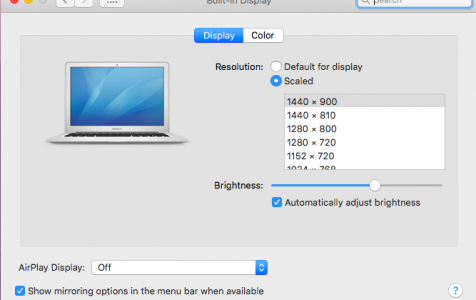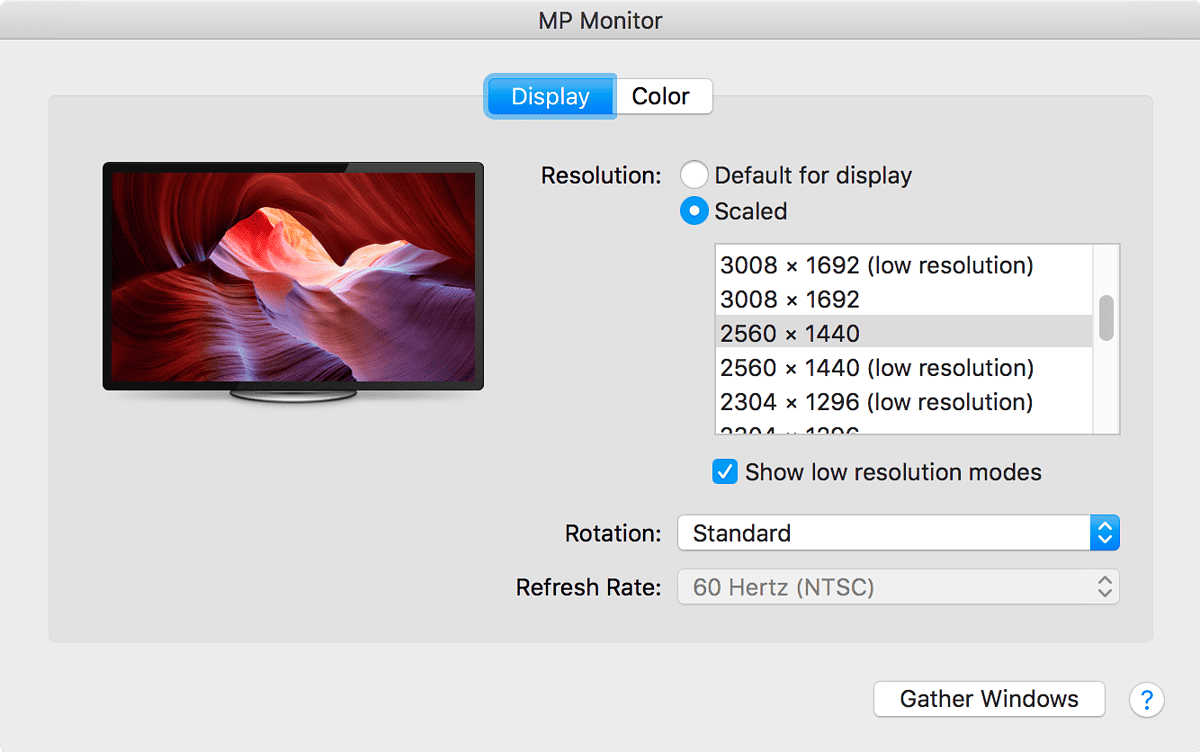

- Mac desktop screen resolution professional#
- Mac desktop screen resolution mac#
- Mac desktop screen resolution windows#
That allows a larger display resolution to be used without shrinking on-screen items to the point of being difficult to see. Scaling works by taking something that would typically use a single pixel and making it use multiples of two instead. Everything looks great because of the high resolution, but because it’s scaled, you can still read it. You would expect everything to be tiny at that resolution, but because macOS scales everything up, it’s not. And it’s also where scaling comes into effect.Īn excellent example of how Retina displays change the way we think of resolutions is the 5K 27-inch iMac with a resolution of 5120 x 2880. Apple defines a Retina display as one whose pixel density is so high that your eyes can’t see individual pixels when you’re sitting at a reasonable viewing distance.įor you, that means a tack sharp image. The direct link between how many pixels a display has and how much space is available on-screen is broken by Apple’s use of Retina displays.

Larger displays usually also have higher resolutions than smaller ones, especially if they are of good quality. Because of the larger resolution, however, that also means all on-screen elements are smaller, which is something else to consider. Those things could be windows, icons, photos, or text in a document. Higher resolutions mean that more things can be shown on-screen. How much information you can see on-screen at any given time is governed by its resolution. A 4K display has a resolution of 3840 x 2160 pixels, or 3840 pixels horizontally, and 2160 pixels vertically. But if you do some digging, you can get some real control over your display by making actual resolutions available to you.Ī display’s resolution is the number of pixels available both horizontally and vertically. They’re fine, but they’re options to make text bigger or your desktop larger without using the number-based resolutions we all understand.
Mac desktop screen resolution mac#
There are also four or five different options-depending on your Mac and display and highlighted below-that provide different outcomes. Normally a Mac will run its display at the resolution Apple believes is best. There are some predefined scaled resolutions available, but you can get more granular control over your display’s resolution. You can change the display resolution of your Mac to make text larger or gain more space. His work has been published on Macworld, PCMag, 1Password’s blog, and other websites.
Mac desktop screen resolution professional#
Oliver Haslam is a professional freelance writer with nearly ten years of experience. Using a scaled resolution may affect performance.
Mac desktop screen resolution windows#
You can select “Show all resolutions” to see additional resolutions for the display.ĭepending on how you adjust the resolution, some app windows may not fit entirely on the screen. Select your display in the sidebar, then do one of the following, depending on your display:Ĭlick the Scaled pop-up menu, then choose a scaled resolution for the display.Ĭhoose Scaled, then select the resolution you want to use. > System Preferences, click Displays, then click Display Settings. If you have more than one display, additional resolution options are available after the display is connected. Set the resolution for a connected display Select Scaled, then select one of the options. > System Preferences, then click Displays. Set the resolution for your primary display While it’s best to use the default resolution, you can manually set the resolution to make text and objects appear larger on your screen, or adjust it to make text and objects appear smaller so you have more space on your screen. By default, your Mac automatically uses the best resolution for the display. Your display’s resolution determines the size of text and objects on your screen.


 0 kommentar(er)
0 kommentar(er)
